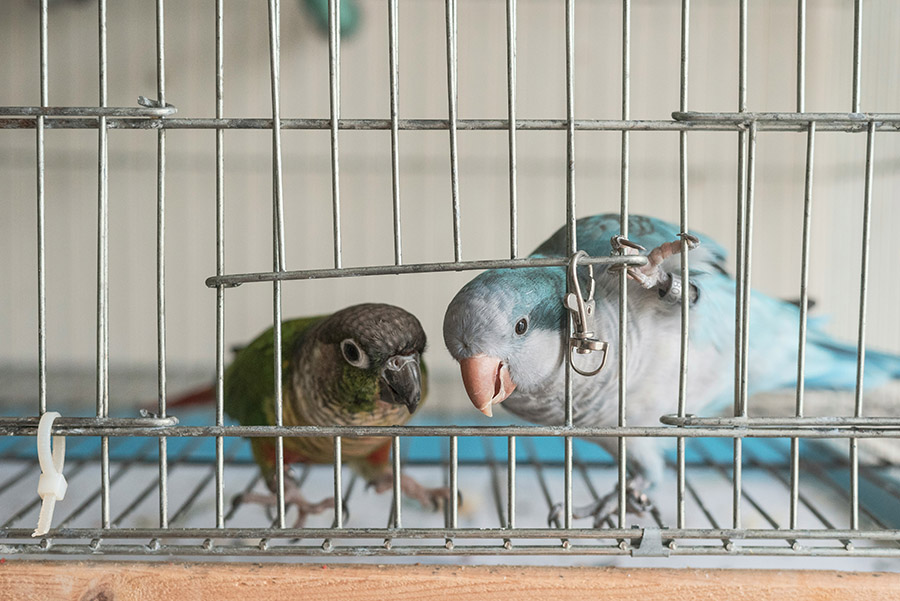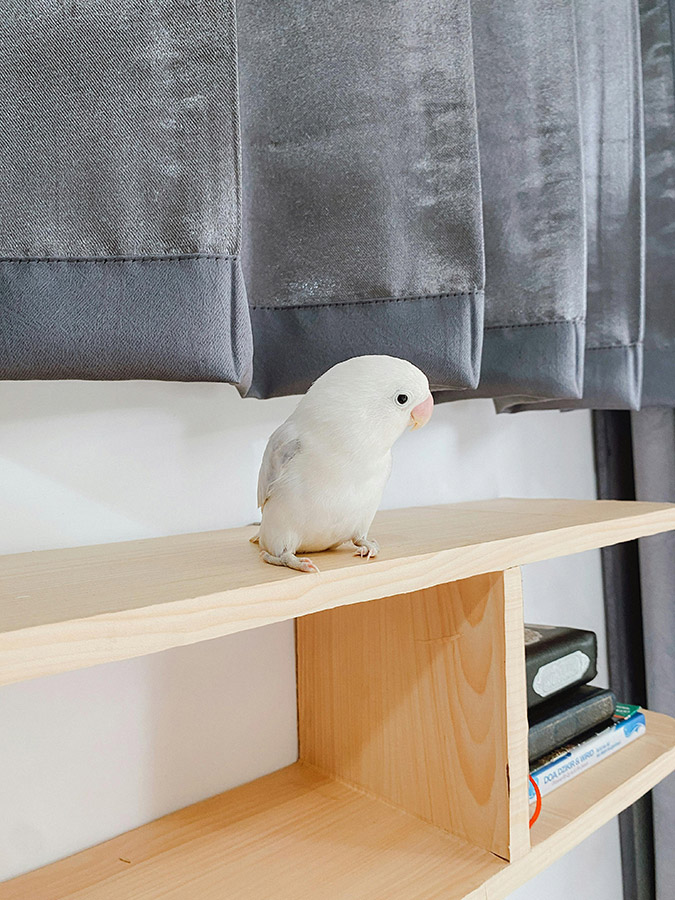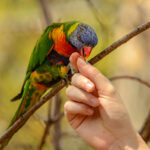- arrow_back Home
- keyboard_arrow_right Living Space

Parrot-Proofing Your Home: Keeping Your Feathered Friend Safe
When we think of getting a pet, our thoughts usually go to cats, dogs, and maybe fish, forgetting that parrots in their various sizes and types make for wonderful companions. They’ve got surprisingly developed personalities and live for a very long time, so chances are you’ll never be bored with having them around.
There’s much more to parrots aside from their ability to mimic sounds, though that is an incredible advantage no other species can offer. They’re lively, curious, and affectionate with their owners, all characteristics of a dream pet. But before you run to the closest pet store, let’s talk about the basics – parrot-proofing your home. Here’s what you need to know!
Home Parrot-Proofing – Where to begin?
We already mentioned that parrots have great personalities, and one of their strongest traits is their curiosity – they’ll want to investigate just about anything they spot in your home. Here are some steps you can take to ensure that your home is parrot-proof and that your winged friend is safe wherever he flies.
Start with their Cage
The first thing you’ll need to think about when getting a parrot is their home, aka the cage they’ll be in most of the time (at least in the beginning). To ensure your parrot feels safe in it, it’s essential you pick a cage that’s the right size, made of non-toxic materials, and that the size and the spacing of the bars are on point.
Vets at Edgewater pet hospital, Bond Vet suggest that if you have a smaller parrot, like a Parrotlet, Budgie, or Cockatiel, you can pick smaller cages with thinner bars and smaller spacing between them to avoid your birdie getting stuck. The rule of thumb is for the cage to be at least twice as wide as your parrot’s wingspan or bigger.
If you opt for bigger breeds, such as Macaws or Cockatoos, you’ll need a much bigger cage with stronger bars that their mighty beak can’t bend. If possible, always choose a rectangular cage made of stainless steel, which is durable and easy to clean. The doors on the cage should be big enough for you to clean the cage easily, but it shouldn’t be easy to open because your feathery friend can quickly learn how to get itself out. Now that their home is sorted let’s move on to yours!

Keeping Your Living Room Safe
When we say living room, we really mean any space in which you and your parrot will spend most of your time playing and training. Before you do that, though, be sure to:
- Get rid of any plants that could be toxic to your parrot (the list is long, but the most common types of plants are wisteria, philodendron, sage, peony, figs, etc.).
- Protect all the visible cords because parrots may confuse them with food or toys and start picking, which could cause injury or even death.
- Close and parrot-proof doors and windows to avoid your pet flying out or getting stuck in another room or outside. You can also use a secure screen on your windows to prevent them from flying off.
Your Kitchen Needs Parrot-Proofing as Well
You can think of parrot-proofing just like baby-proofing – chances are, you’ll need to make some changes in every room in your home. This especially goes for your kitchen because there are different ways that your parrot can get hurt.
One of the first things everyone owning a parrot will tell you is to get rid of all Teflon cookware. While these appliances may come in handy in the kitchen, they’re bad news for birds, as Teflon fumes can be highly toxic. In all truth, Teflon isn’t great news for humans either, so ditching it for cast iron or stainless steel pans and pots is definitely a good idea.
When you’re cooking, your pet parrot shouldn’t be anywhere near the kitchen. Their inquisitive nature can put them in harm’s way, especially when hot stove tops and boiling water are involved. They also like to go through trash and sample food, even though both can be toxic for them, especially caffeine, salt, chocolate, apple seeds, onions, avocados, and the list goes on. As you can see, securing your kitchen to ensure your parrot is safe and healthy is a must.

The Bathroom Is a No-Go Zone
As you’ve figured out so far, parrots are fun and curious, sometimes to their own detriment. It’s vital that you train them and teach them where they can and can’t go, and your bathroom is a no-go zone.
Since the bathroom is usually where we keep all the cleaning supplies, having your parrot rummaging around them is a bad idea because they can get exposed to toxic chemicals. There are also several sources of open water in the bathroom, and since parrots aren’t strong swimmers (at best, they float), having them around bathtubs and open faucets should be avoided. And while we’re at it, keep your toilet lids closed to prevent your parrot from drinking the water or getting stuck in the bowl.
Conclusion
Parrots make for fantastic pets, and once you get the hang of living with a bird, chances are you’ll get very close very quickly. While they make for amazing companions, it’s important to parrot-proof your entire home and ensure they’ve got a cage that’s comfortable for them. Everything else, you’ll learn as you go, and if you’re lucky, you’ll have a winged friend with you for decades.
Parrot Junkie www.parrotjunkie.com
Copyright © 2021-2024. All rights reserved.



Jada
16 October 2024
hi. I just wanted to say thank you for all the tips for keeping our feathered friends safe and happy.
Parrot Junkie
19 October 2024
thank you for the kind note!